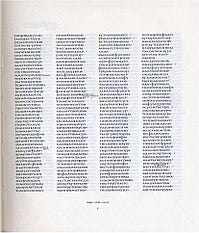The New Testament is not arranged chronologically, in terms of its composition. It is arranged by a combination of narrative order and anthologization: both the story of Jesus and the apostles and the sequence in which later Christians accepted the various later epistolary documents and the Apocalypse of John. But because it is not arranged chronologically, the modern reader is often fooled into reading “later” (in terms of canonical order) New Testament texts through the lens of “earlier” ones (again, in the canon), when in fact the relationship is the other way around. Consider Paul’s brief mention in Galatians 4:4 that Jesus was “born of a woman.” Now, if we read the New Testament in order, like a large, sequential book, it’s almost impossible to read Galatians 4:4 other than through the infancy Gospels of Matthew and Luke. We also assume the work of those stories implied in the Prologue to John, John 1:1-18, despite the fact that nothing is ever said in John about Jesus’s miraculous conception and birth. Or, when Paul mentions the night in which Jesus was “handed over” (1 Cor 11:23), we presume the Gospel narrative story which attributes the betrayal of Jesus to Judas Iscariot. Doesn’t everyone know that story? But Paul says nothing about Judas. Canon order encourages eisegesis.
Keep reading with a 7-day free trial
Subscribe to A Perennial Digression to keep reading this post and get 7 days of free access to the full post archives.


